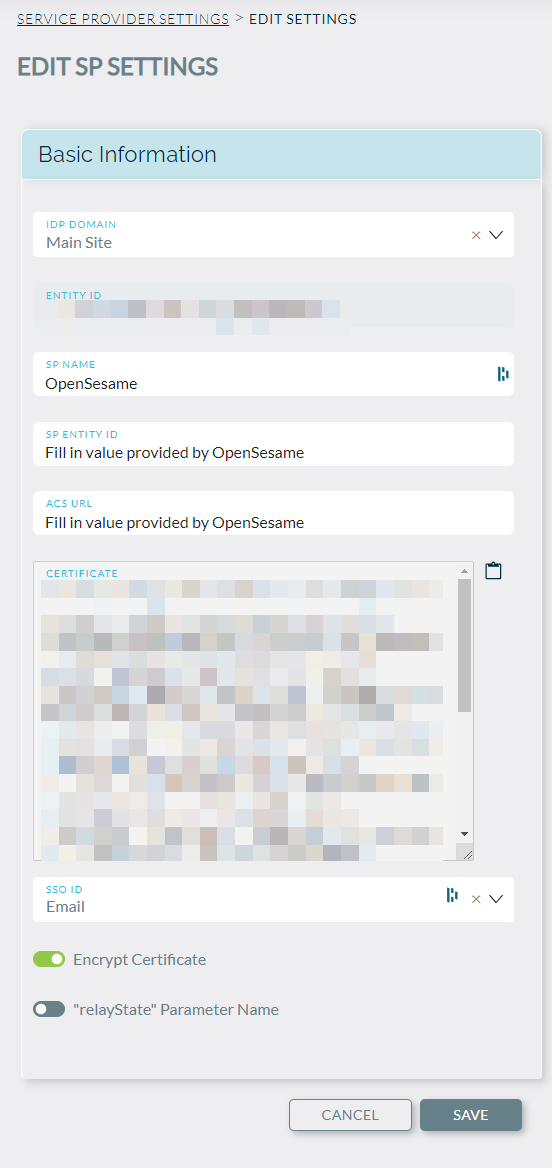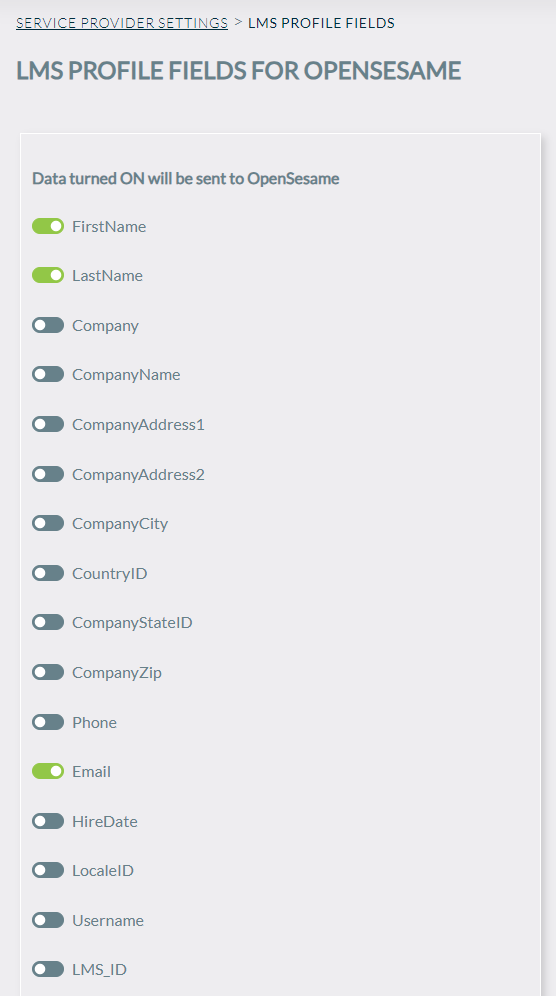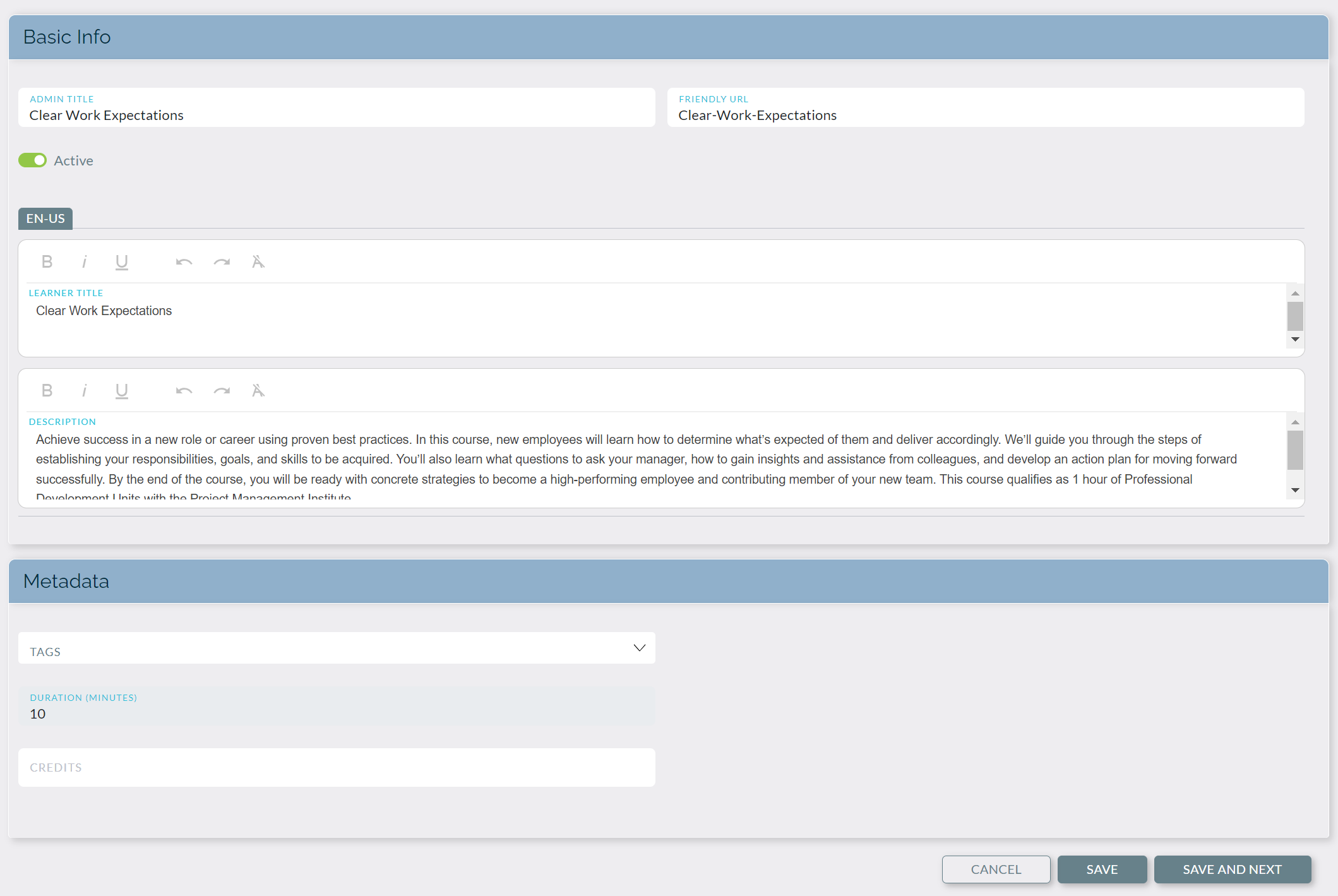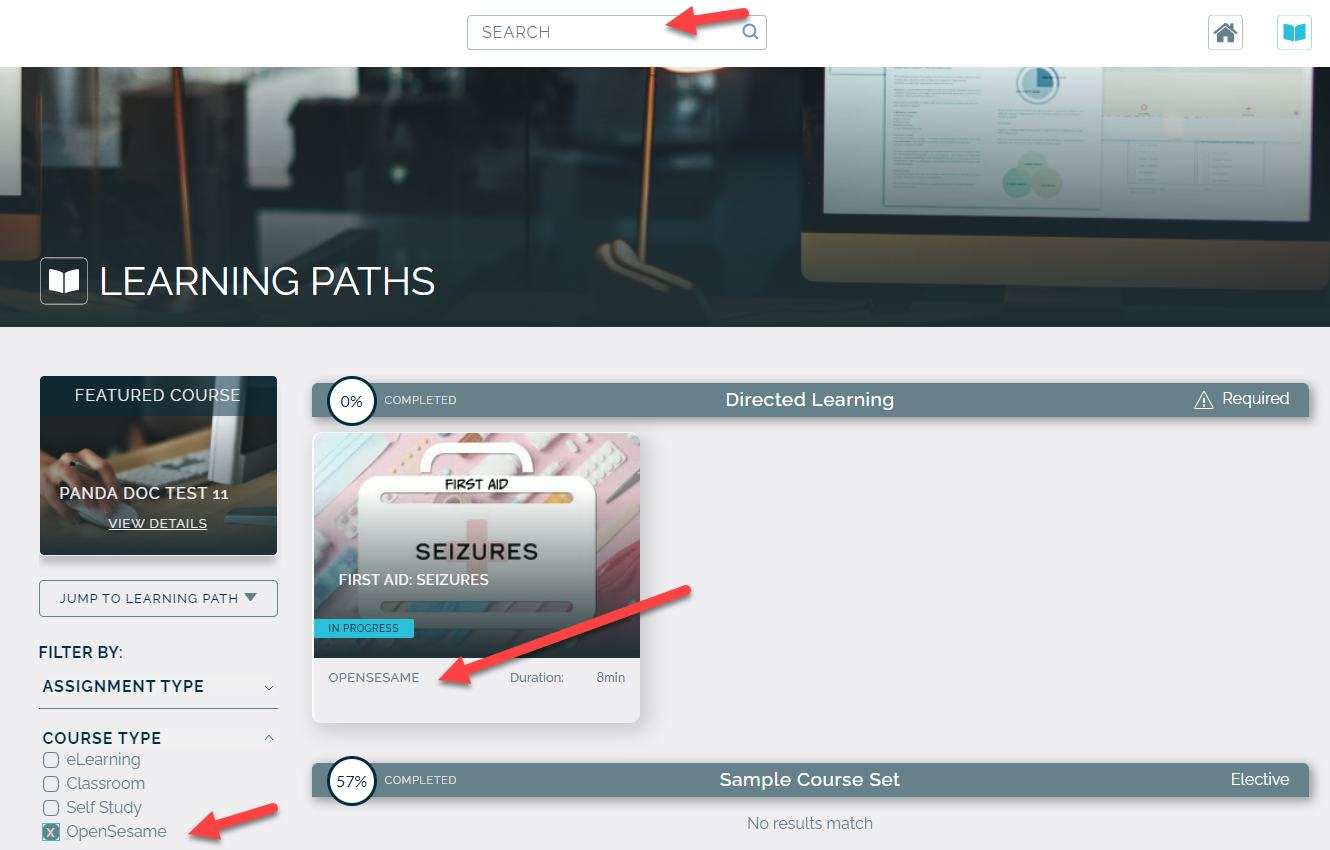OpenSesame Integration with Knowledge Anywhere
Knowledge Anywhere is pleased to announce that an integration with Open Sesame is available for all our customers. This integration allows your learners to access Open Sesame content directly from via your Knowledge Anywhere LMS.
What you will need to get started:
- Subscription with Open Sesame Contact OpenSesame to set up your learning plan that is right for your organization.
- Have Open Sesame Enabled on your LMS This integration is currently only available to our Professional and Enterprise customers. If you are a Professional and Enterprise customer, then please contact our Support Team to have Open Sesame integration enabled for your LMS. If you are an Express customer, please contact your Project/Account Manager to find out what it would take to upgrade to Professional.
A. Setting up Open Sesame Integration
1. Work with Open Sesame Support to Enable Integration with Knowledge Anywhere
Open Sesame will provide a Client Integration ID and enable the integration on Open Sesame's side.
2. Find courses that you would like to include in LMS Integration by adding them to a List. Then, select the desired courses from that List and click Send to Integration. The system will prompt you to select an integration destination. Once selected, click Send Now.

3. Add Client Integration ID
a. Log in as an administrator on your LMS and go to Site > Open Sesame Settings
b. Fill in the Client Integration ID (from step 1 above), then click Active, then click Save
c. Now you will see 2 new sections
i. xAPI Settings for Open Sesame – click Export to Text File and send the contents to Open Sesame
ii. Service Provider (SP) Settings – click IDP MetaData to download a file and send to Open Sesame

4. Fill in the Service Provider info in the LMS
a. Open Sesame support will return a “Service Provider Metadata XML File” that looks like this:

b. Log in as an administrator on your LMS and go to Site > Open Sesame Settings
c. In the SP section, click the Edit button and fill in the “SP Entity ID” and “ACS Url” field values from the XML file in step 4a. Both values should start with https://
d. click “Save”

5. Map fields
a. Back in Open Sesame Settings page, click Fields button to get to this page:

b. Turn the fields that need to be mapped by clicking on the toggle until you see "On". Click Save.
B. Select Open Sesame Courses to add to the LMS Catalog
So far, you have configured all settings that are need to be done once and once only.
This section will be about the on-going tasks.
1. Synchronizing Catalog between OpenSesame and the LMS
There are 3 options for synchronizing catalog:
- Manual synchronization: log in as an administrator on your LMS: Site > OpenSesame Settings:
Run Daily Sync - only takes any changes (newly-added courses, updated courses, retired courses) since the last sync - Manual synchronization: log in as an administrator on your LMS: Site > OpenSesame Settings:
Run Full Sync - takes the entire course catalog that was marked for "Send to Integration" from OpenSesame and synchronizes that set of courses to the LMS - Automatic synchronization: do nothing and a nightly process will do the same thing as “Run Daily Sync” in option 1.
2. Pulling Open Sesame courses into the LMS
- Log in to Administrative Dashboard
- From Content menu, click OpenSesame Courses
- You see a list of OpenSesame courses that are in OpenSesame's catalog.
Search for the course by keyword, calalog status, or whether it's already been added to the LMS - Once found, click Add As an LMS Course

- This opens the add course page. Notice that the a lot of information have been copied over, such as the title, description, duration, and course image (not shown on the screenshot below)
- Fill in any remaining details as desired
- Click Save to add this OpenSesame course to the LMS
- From here, you can assign the course to a learning path or as directed learning

C. Learner Selecting an Open Sesame Course
Learners generally take courses that are assigned to a learning path or directly assigned to them.
To filter specifically for Open Sesame courses, go to Learning Paths page, then use the filter by Course Type = Open Sesame. Learner can launch the course just like any other eLearning course.

For more information please see this attachment from Open Sesame.